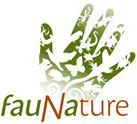fauNature are passionate about creating homes for wildlife. Ideally, hollows are created in trees naturally, however they can take up to 100 years to develop. Purposeful habitat creation is necessary sometimes to provide homes to animals that would otherwise go without.
fauNature have accumulated the resources below to provide guidance on habitat creation as well as information relating to our nesting boxes.
Old growth trees containing natural hollows are now rare many urban and rural environments, yet they are esential for over 300 native animal species. Natural hollows are better than nesting boxes or artificial hollows for native wildlife to shelter and/or nest in, however hatitat augmentation my be invaluable where hollows are in short supply.
Habitat trees are often condemed as a potential danger to life as well as property, so are removed. To retain these important components of the landscape, to benefit native wildlife, the risk associated with these trees need to be migitaged.
Traditionally nesting boxes have been used to augment natural hollows, however in the last few year arborists have been looking into how they may be able to assist in this process. Retaining habitat trees, while minimising the associated risks is has been one of the principle drivers. A number of workshop have been run to raise awareness of this issue, across South Australia, Victoria and Queensland – including TreeNet, City of Hume, Aurby Council/Woodonga Tafe College and World Arbor Camp.
The workshop and associated presentations were developed by Phil Kenyon (arborist – Kenyon’s Quality Tree Care), Pat Kenyon (arborist – Tree Tactics) and James Smith (zoologist – fauNature). The written material delivered at these workshops are included below…
Tree and Habitat Creation Workshop
Habitat Creation Workshop
Nest Box Installation
Habitat Tree - Hollow Dimensions
Connect with fauNature
